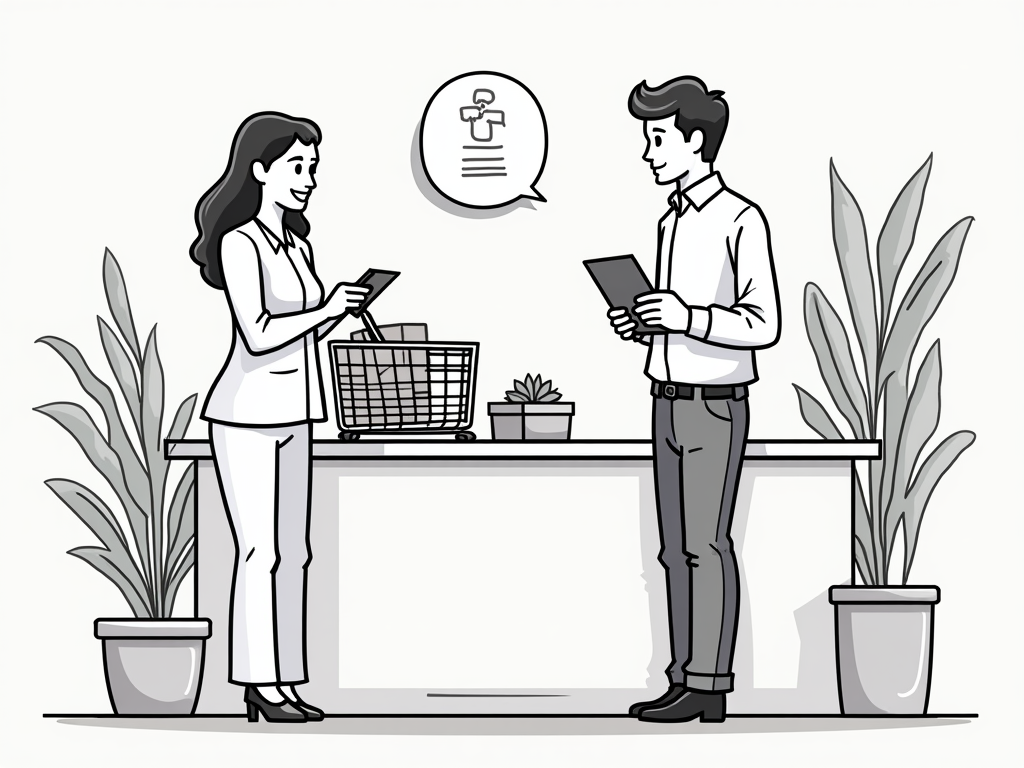
EU VAT Rules for Spanish Businesses Selling Online: Mastering the OSS System
Reading time: 12 minutes
Table of Contents
Introduction to the OSS VAT System
The labyrinth of EU VAT regulations has long been a headache for Spanish businesses selling online across European borders. If you’ve found yourself puzzled by inconsistent rules, multiple VAT registrations, and a mountain of compliance paperwork, you’re not alone.
Since July 2021, the One-Stop Shop (OSS) system has transformed how Spanish e-commerce businesses handle VAT on cross-border sales. Rather than a bureaucratic burden, this system represents an opportunity for streamlined operations and expanded market reach—if you understand how to navigate it effectively.
Let’s be clear: mastering the OSS system isn’t just about compliance—it’s about gaining a competitive edge in a digital marketplace where administrative efficiency directly impacts your bottom line.
Consider this: before OSS, a Spanish online retailer selling to customers in 10 EU countries potentially needed 10 separate VAT registrations, 10 different compliance processes, and 10 varying reporting schedules. Now, all this can be consolidated into a single declaration through the Spanish Tax Authority (Agencia Tributaria). The potential time and cost savings are substantial, but only if you implement the system correctly.
Understanding the One-Stop Shop (OSS) System
The OSS system is essentially a simplification mechanism for VAT compliance on cross-border transactions within the EU. At its core, it allows businesses to register for VAT in just one EU member state and submit a single VAT return covering all their EU sales.
But here’s where many Spanish businesses get confused: OSS isn’t a single system but rather three distinct schemes, each serving different types of transactions and businesses.
The Union Scheme
This is the primary scheme relevant to Spanish businesses established within the EU. It covers:
- B2C sales of goods within the EU (intra-Community distance sales)
- Certain domestic supplies facilitated by electronic interfaces
- B2C supplies of services to consumers in other EU member states
For example, if your Madrid-based online store sells handcrafted jewelry to customers in France, Germany, and Italy, you can report and pay VAT on all these sales through a single OSS return filed with the Agencia Tributaria. The tax authority then distributes the appropriate amounts to each relevant country.
Pro Tip: While OSS simplifies reporting, you’ll still need to charge the correct VAT rate applicable in the customer’s country. This means staying updated on 27 different VAT rate structures across the EU.
The Non-Union Scheme
This scheme applies to businesses not established in the EU but providing services to EU consumers. While not directly applicable to Spanish-established businesses, it might be relevant if you have non-EU subsidiaries or are planning international expansion.
The Non-Union scheme covers B2C services only, not goods, and requires registration in any EU member state where the business isn’t already registered for VAT.
The Import Scheme (IOSS)
The Import One-Stop Shop (IOSS) facilitates the declaration and payment of VAT for distance sales of goods imported from non-EU countries or territories to customers in the EU, with a value not exceeding €150.
For Spanish businesses importing goods from non-EU suppliers and selling them to EU consumers, or Spanish businesses with warehouses outside the EU shipping directly to EU customers, the IOSS scheme offers significant advantages:
- Faster customs clearance
- A more transparent purchasing process for customers (no unexpected fees)
- Single monthly VAT return for all eligible imports
“The introduction of IOSS has been transformative for our business,” says María Rodríguez, CEO of Barcelona-based marketplace Iberian Treasures. “Previously, our customers would often refuse deliveries when faced with unexpected customs charges. With IOSS, the price they see is the price they pay, resulting in a 23% decrease in abandoned deliveries.”
What Spanish Businesses Need to Know
The implementation of OSS has specific implications for Spanish businesses that differ somewhat from those in other EU countries due to Spain’s particular VAT landscape and the Agencia Tributaria’s requirements.
Registration Process and Requirements
To register for OSS in Spain, you’ll need to navigate the Agencia Tributaria’s electronic portal. The process involves:
- Accessing the Agencia Tributaria website
- Locating the specific OSS registration section
- Providing your tax identification number (NIF)
- Supplying details about your business activities and the countries where you sell
- Submitting the application electronically using your digital certificate or Cl@ve system
A critical point often overlooked: You must register by the 10th day of the month following your first cross-border sale. Miss this deadline, and you’ll need to register for VAT in each country where you made sales, negating the primary benefit of OSS.
Luis Martínez, a tax consultant specializing in e-commerce, notes: “I’ve seen numerous Spanish businesses miss this narrow registration window, particularly smaller companies without dedicated tax departments. The resulting multiple VAT registrations can cost thousands in compliance fees that could have been avoided.”
Reporting Obligations and Deadlines
Once registered for OSS, Spanish businesses must adhere to specific reporting calendars:
- Quarterly OSS returns: Due by the last day of the month following the end of the quarter (e.g., Q1 return due by April 30)
- Monthly IOSS returns: Due by the last day of the month following the reporting month
- Record-keeping: All relevant transaction records must be maintained for 10 years
Your OSS return must include:
- Your Spanish OSS identification number
- The total value of goods and services supplied in each member state during the reporting period, excluding VAT
- The applicable VAT rates for each country
- The total amount of VAT due for each member state
Important: Unlike regular Spanish VAT returns, OSS returns don’t allow for input VAT deduction. You’ll need to reclaim any input VAT through a separate EU VAT refund procedure or your domestic VAT return.
Practical Implementation of OSS
Adapting Your Accounting Systems
The success of your OSS implementation heavily depends on your accounting system’s capability to handle the complexity of multiple VAT rates and reporting requirements.
A robust OSS-ready accounting system should:
- Automatically apply the correct VAT rate based on the customer’s location
- Segregate OSS-eligible transactions from domestic and B2B transactions
- Generate reports aligned with OSS return requirements
- Track return periods and submission deadlines
- Maintain auditable records of all cross-border transactions
Sergio Gómez, founder of Valencia-based electronics retailer TechIberia, shares his experience: “We invested €8,000 in upgrading our ERP system to handle OSS requirements. It seemed expensive initially, but we’ve saved approximately €15,000 annually in fees we previously paid to local tax representatives in various EU countries. The return on investment was evident within six months.”
Pricing Strategies Under OSS
The varying VAT rates across the EU present both challenges and opportunities for strategic pricing:
| Country | Standard VAT Rate | Reduced VAT Rate(s) | Impact on Pricing Strategy | Profit Margin Effect |
|---|---|---|---|---|
| Spain | 21% | 10%, 4% | Baseline for comparison | Reference point |
| Luxembourg | 17% | 14%, 8%, 3% | Opportunity for lower prices or higher margins | +4% potential increase |
| Hungary | 27% | 18%, 5% | Price pressure in competitive markets | -6% potential decrease |
| Denmark | 25% | None | Challenging for reduced-rate products in Spain | -4% to -21% depending on product category |
| Ireland | 23% | 13.5%, 9%, 4.8%, 0% | Complex but opportunities in certain categories | Varies significantly by product type |
Spanish businesses have two main pricing approaches under OSS:
- Uniform pricing: Maintaining the same gross price across all EU markets, absorbing VAT differences into your margin
- Country-specific pricing: Adjusting prices to account for different VAT rates, maintaining consistent margins
The best approach depends on your product type, competition, and market positioning. Luxury goods retailers often opt for uniform pricing for brand consistency, while businesses with thin margins typically prefer country-specific pricing to protect profitability.
Common Challenges and Solutions
In my consultation with dozens of Spanish e-commerce businesses, several recurring challenges with OSS implementation have emerged:
Challenge 1: Determining the Place of Supply
For digital services, determining where your customer is located (and thus which VAT rate applies) can be complex. The rules require you to collect and store two non-contradictory pieces of evidence of customer location.
Solution: Implement robust checkout processes that capture and verify location data such as billing address, IP location, bank details, or phone country code. Leading Spanish platforms like Shopify and PrestaShop offer plugins specifically designed for EU VAT compliance that can automate much of this process.
Challenge 2: Threshold Management
Many businesses struggle with monitoring the €10,000 threshold for cross-border sales, above which OSS registration becomes mandatory.
Solution: Set up automated alerts in your sales system when you approach 70% of the threshold (€7,000) to give yourself adequate time to prepare for OSS registration. Remember that this threshold applies to the combined total of all cross-border B2C sales within the EU, not per country.
Challenge 3: Product Classification Discrepancies
Products may qualify for reduced VAT rates in some countries but not others, creating compliance risks if miscategorized.
Solution: Develop a comprehensive product classification matrix with input from tax advisors familiar with various EU markets. For larger catalogs, consider specialized VAT classification software that maintains current rates and rules for all product categories.
A practical example comes from Catalan organic food retailer NaturEats, which faced a challenge when they discovered their organic olive oil qualified for reduced VAT rates in some EU countries but standard rates in others. “We commissioned a detailed product classification audit,” explains CFO Jordi Puig. “The initial €3,500 investment saved us from potential non-compliance penalties and allowed us to optimize our pricing in countries where reduced rates applied.”
Case Studies: Spanish Businesses Navigating OSS
Case Study 1: Moda Española – Fashion Retailer
Barcelona-based fashion retailer Moda Española was selling to customers in 12 EU countries before OSS, maintaining VAT registrations in France, Germany, and Italy while remaining below registration thresholds elsewhere.
Their OSS implementation journey included:
- Initial registration with Agencia Tributaria for the Union Scheme
- ERP system upgrade to track sales by destination country and applicable VAT rates
- Staff training on the new compliance requirements
- Deregistration from individual country VAT systems (saving approximately €6,000 annually in compliance costs)
Results: Beyond cost savings, they expanded to 5 additional EU markets previously considered too complex from a VAT perspective. Their quarterly OSS return now takes approximately 3 hours to prepare, compared to the 2-3 days previously spent on multiple VAT returns.
Case Study 2: Digital Solutions Madrid – Software Provider
This B2C software company faced unique challenges with digital service provisions across the EU. Before OSS, they were using the previous Mini One-Stop Shop (MOSS) system for digital services.
Their transition involved:
- Migrating from MOSS to OSS without interruption
- Implementing enhanced customer location verification protocols
- Developing a VAT calculation API that connects to their customer portal
Results: Their automated system now handles over 15,000 transactions monthly across all EU countries with 99.8% accuracy in VAT calculation and reporting. The company estimates they’ve avoided approximately €40,000 in potential non-compliance penalties through their proactive approach.
Conclusion
The OSS system represents both a significant compliance simplification and a strategic opportunity for Spanish online businesses. While initial implementation requires thoughtful planning and potential system upgrades, the long-term benefits are substantial: reduced administrative burden, lower compliance costs, and expanded market access.
Success with OSS isn’t just about technical compliance—it’s about integrating these VAT considerations into your broader business strategy. From pricing decisions to market expansion plans, OSS implications should be part of your business planning process.
The most successful Spanish businesses approaching OSS are those that view it not as a tax compliance exercise but as a business enabler that allows them to compete more effectively across the entire European market.
As you implement OSS for your business, remember that perfection isn’t required from day one. Start with solid fundamentals, establish reliable processes, and continuously refine your approach as you gain experience with the system.
The European e-commerce landscape is increasingly unified, and with OSS, Spanish businesses have the tools to thrive within it. The question isn’t whether you can afford to implement OSS properly—it’s whether you can afford not to.
FAQs
Can I use OSS for B2B sales from Spain to other EU countries?
No, the OSS system is specifically designed for B2C (business-to-consumer) transactions. B2B (business-to-business) cross-border sales within the EU continue to be governed by the reverse charge mechanism, where the business customer accounts for VAT in their country. You must still validate your business customers’ VAT numbers using the VIES system and maintain proper documentation of these B2B transactions, but they shouldn’t be included in your OSS return.
What happens if I exceed the €10,000 threshold mid-year?
Once you exceed the €10,000 threshold for cross-border B2C sales within the EU, you must register for OSS by the 10th day of the month following the month when you exceeded the threshold. From that point forward, you must charge the VAT rate applicable in each customer’s country. For the sales made before exceeding the threshold, you correctly applied Spanish VAT rates, and no correction is needed. The threshold applies to the combined total of all cross-border B2C sales and certain electronic services, not individual countries separately.
How do returns and refunds affect my OSS VAT return?
Returns and refunds should be included in the OSS return for the period in which the refund is made or the return is accepted. This means adjusting the VAT amount previously declared. For example, if you sell a product to a French customer in Q1 and the customer returns it in Q2, you would reduce the reported sales to France in your Q2 OSS return by the corresponding amount. Make sure your accounting system can track returns by country to facilitate proper reporting. If returns are significant in your business, consider implementing a country-specific returns tracking system to maintain accurate OSS reporting.






